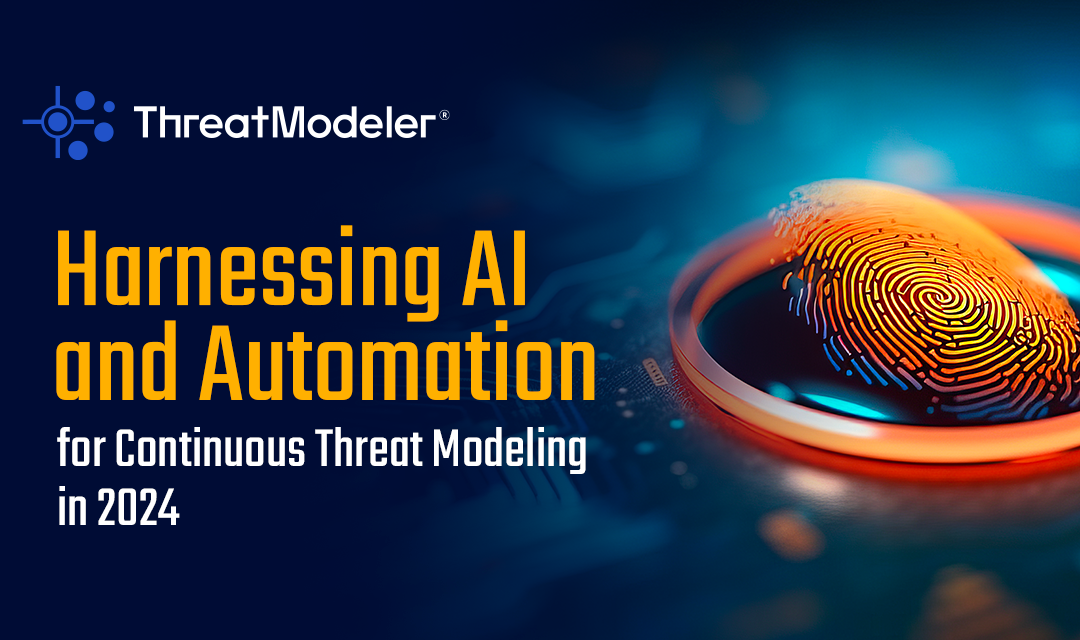In the ever-evolving landscape of cybersecurity, staying ahead of threats is not just a goal but a necessity. With the rise of more complex cyberattacks, traditional methods of threat monitoring and response are no longer sufficient. Hence, organizations are now turning to advanced technologies like artificial intelligence (AI) and automation to enhance their defense mechanisms. One such area where AI integration and automation are proving invaluable is continuous threat modeling. In this blog, we will explore how harnessing AI and automation can revolutionize continuous threat modeling, enabling organizations to enhance their security posture and effectively mitigate risks in real-time.
Leveraging AI for real-time threat detection:
One of the major limitations of traditional threat monitoring is lack of real-time visibility into emerging threats. Manual monitoring processes often struggle to keep pace with the speed and sophistication of modern cyber threats, leaving organizations vulnerable to cyber attacks. By implementing AI-driven threat monitoring, organizations can augment their threat detection capabilities and identify potential threats in real-time.
Benefits of AI in Ongoing Threat Analysis
The integration of AI into threat monitoring processes offers several key benefits:
- Enhanced Detection Accuracy: AI-powered threat detection systems can analyze vast amounts of data from different sources and identify patterns showing malicious activity with a high degree of accuracy. By continuously learning from historical data and adapting to evolving threats, AI and machine learning algorithms can detect anomalies and potential threats that may go unnoticed by traditional security measures.
- Real-time Response: AI-enabled threat detection systems can respond to security incidents in real time, automatically initiating remediation actions to mitigate the impact of an attack. By reducing the time between detection and response, organizations can minimize the potential damage caused by cyber threats and prevent further exploitation of vulnerabilities.
- Scalability: AI-driven threat detection systems are highly scalable and can handle large volumes of data from diverse sources. As the volume and complexity of cyber threats continue to increase, AI offers a scalable solution for effectively managing security risks across the organization, without placing undue burden on human resources.
Implementing Automation for Continuous Monitoring:
Manual monitoring processes can be time-consuming, labor-intensive, and prone to human error. By implementing automation, organizations can streamline threat monitoring processes, improve response times, and enhance overall security posture.
Automation can significantly enhance cybersecurity operations in the following ways:
- Faster Incident Response: Automated incident response tools can detect and mitigate security incidents in real-time, without human intervention. By using predefined response playbooks and decision-making algorithms, organizations can rapidly contain and remediate security threats, minimizing the impact on business operations and reducing the risk of data breaches.
- Efficient Resource Allocation: Automation allows organizations to optimize resource allocation by prioritizing high-risk threats and allocating security resources accordingly. By automating repetitive tasks and workflows, security teams can focus their time and efforts on strategic security initiatives that require human intervention, such as threat analysis and vulnerability management.
- Continuous Compliance Monitoring: Automated compliance monitoring tools can continuously assess the organization’s security posture against industry regulations and best practices. By automatically generating compliance reports and audit trails, organizations can demonstrate regulatory compliance, identify gaps in security controls, and take proactive measures to address vulnerabilities and mitigate risks.
Introducing ThreatModeler WingMan™: Revolutionizing Threat Modeling with AI and Automation
In the world of threat modeling, one tool stands out for its innovative approach to integrating AI and automation: ThreatModeler.
With the recent launch of ThreatModeler Version 7.0, organizations now have access to a comprehensive threat modeling platform equipped with advanced AI capabilities and automation features.
The integration of AI into threat modeling brings forth several key advantages.
- Firstly, ThreatModeler WingMan™ offers simplified threat modeling by providing intelligent suggestions for diagrams, components, and security controls, significantly reducing the time and effort required to create comprehensive threat models.
- Additionally, the platform facilitates real-time collaboration among development and security teams, fostering seamless communication and coordination in identifying and addressing security risks.
- Moreover, WingMan™ provides contextual help and support through natural language processing, empowering users with on-demand assistance and personalized recommendations to enhance their security knowledge.
ThreatModeler WingMan™ boasts a robust set of features and capabilities designed to optimize the threat modeling process. From intelligent diagram suggestions to automated component recommendations, WingMan™ streamlines every aspect of threat modeling. Its intelligent path analysis capabilities enable organizations to identify and mitigate security threats more effectively. Also its seamless ticket submission functionality enhances communication between development, security, and DevSecOps teams.
The integration of AI and automation offers unprecedented opportunities for organizations to enhance their security posture and effectively mitigate cyber risks. By leveraging AI-driven threat detection and automated monitoring tools, organizations can detect and respond to threats in real-time, streamline threat modeling processes, and improve collaboration between security and development teams.
To embrace the power of AI and automation – book a demo with a expert today and stay one step ahead of cyber threats and build a more secure digital future.





